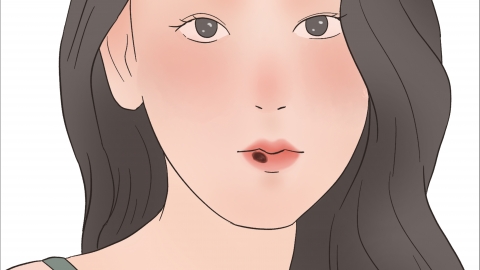What causes the upper lip to appear purple while the lower lip remains normal?
In general, the condition where the upper lip turns cyanotic while the lower lip remains normal may be caused by cold stimulation, excessive fatigue, local trauma, cheilitis (lip inflammation), or carbon monoxide poisoning. If any discomfort occurs, please seek medical attention promptly and receive symptomatic treatment under the guidance of a qualified physician. Detailed explanations are as follows:

1. Cold Stimulation
When the body is exposed to cold environments, surface blood vessels constrict to reduce heat loss, and the lip area is particularly sensitive to temperature changes. The upper lip may be more susceptible to cold, causing more pronounced vasoconstriction, slower blood flow, and relatively reduced oxygen content, resulting in cyanosis. It is important to keep warm in cold environments, such as by wearing a mask.
2. Excessive Fatigue
Prolonged overexertion places the body in a state of stress, altering circulation and potentially causing poor local blood flow in the lips. The capillaries in the upper lip are relatively finer and more prone to disruption, leading to insufficient oxygen supply and cyanosis. It is recommended to manage work and rest time reasonably, ensure sufficient sleep, and avoid excessive fatigue.
3. Local Trauma
Following trauma such as a blow to the upper lip, local tissue damage and bleeding may occur, causing blood accumulation. Inflammatory responses can further impair vascular function, leading to lip cyanosis. This may be accompanied by symptoms such as swelling and pain. Patients may use medications such as Yunnan Baiyao Capsules, Huoxue Zhitong Capsules, and Ibuprofen Sustained-Release Capsules according to medical advice to alleviate discomfort.
4. Cheilitis (Lip Inflammation)
Cheilitis is often caused by allergies, infections, or sun exposure. Inflammatory stimuli can cause local vasodilation and increased vascular permeability on the upper lip, allowing blood components to leak out. Inflammatory mediators may also affect vascular constriction and dilation functions, leading to circulatory disturbances and cyanosis. Symptoms such as dryness and flaking of the lips may also occur. Under a doctor's guidance, medications such as Tacrolimus Ointment, Pimecrolimus Cream, and Loratadine Tablets may be used to relieve symptoms.
5. Carbon Monoxide Poisoning
Carbon monoxide poisoning occurs when carbon monoxide gas is inhaled. Carbon monoxide binds to hemoglobin more strongly than oxygen, forming carboxyhemoglobin and preventing oxygen from binding normally to hemoglobin, potentially causing tissue hypoxia. Cyanosis may appear on areas such as the upper lip, along with symptoms like headache and dizziness. Patients may be advised by a physician to use medications such as Mannitol Injection, Furosemide Injection, and Adenosine Disodium Triphosphate Tablets for treatment.
In daily life, it is important to engage in regular exercise to strengthen physical resistance and maintain a healthy lifestyle, including a balanced diet, smoking cessation, and alcohol moderation, which can help prevent abnormal lip cyanosis.





